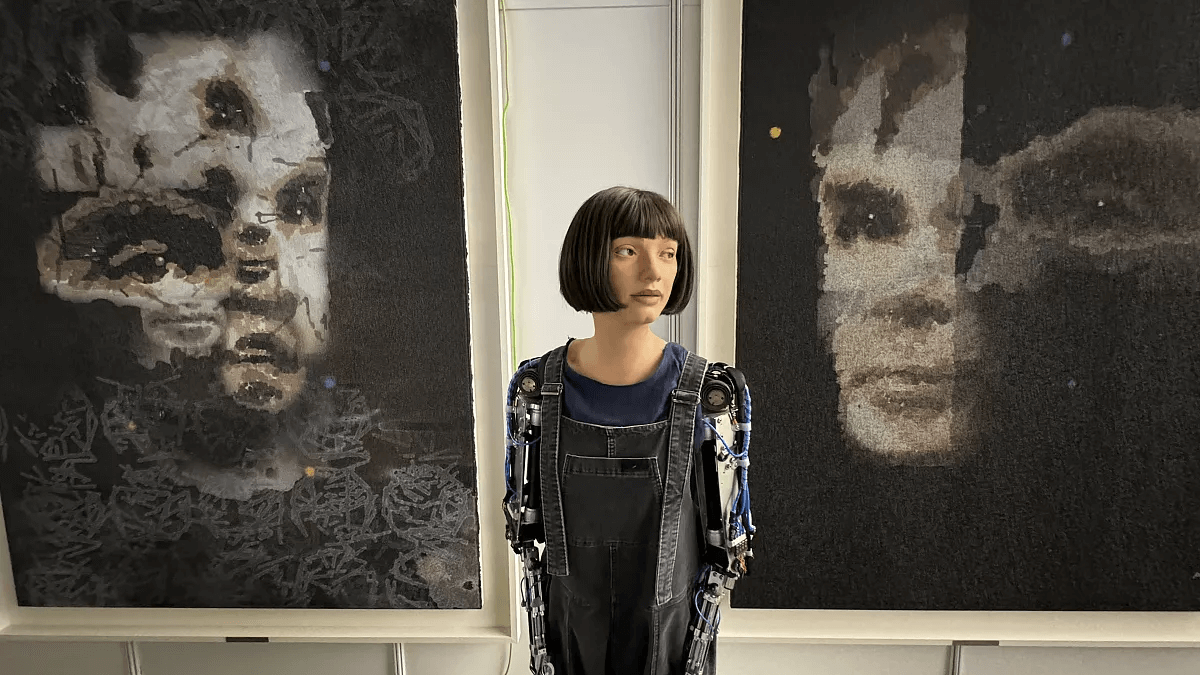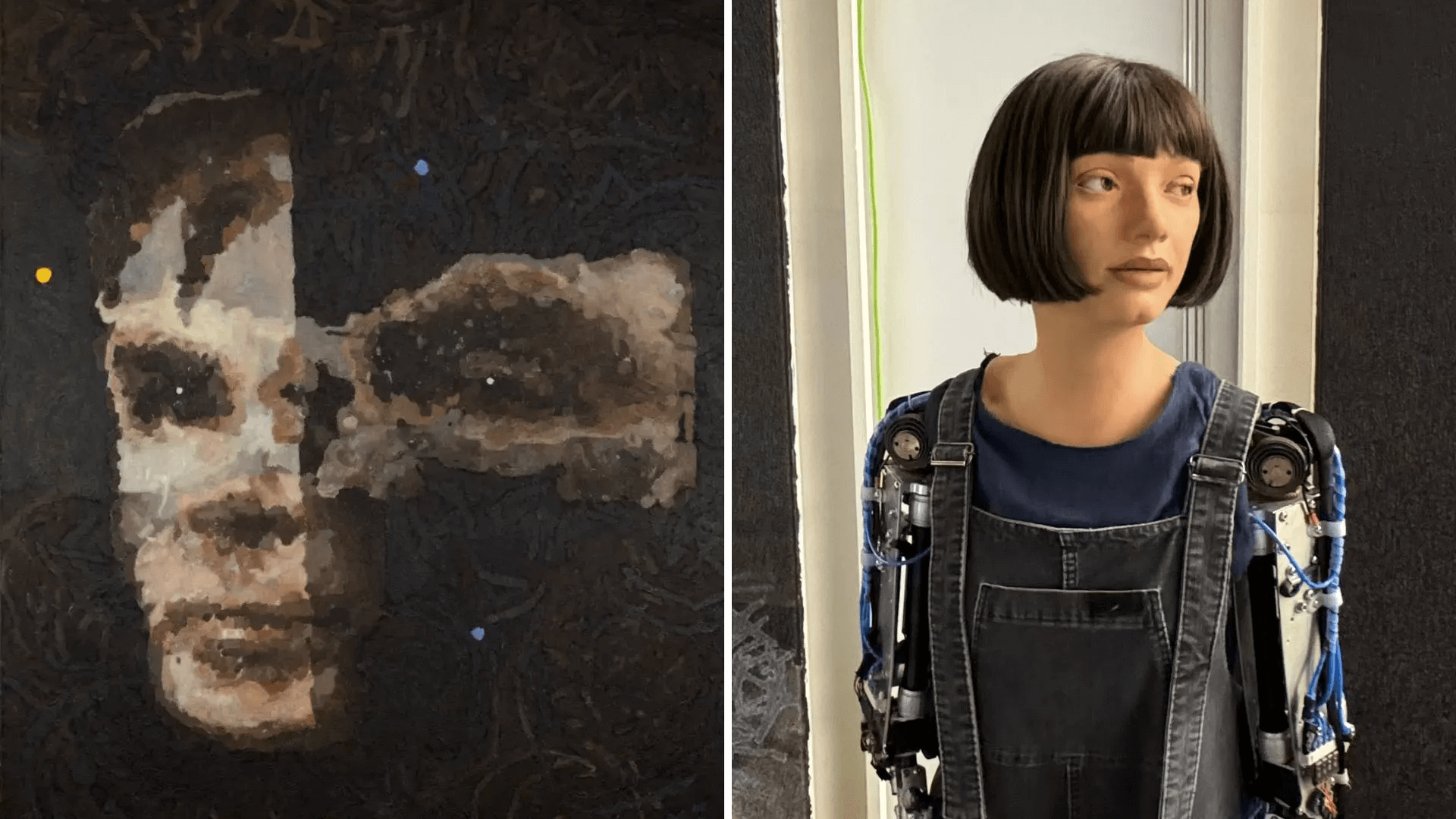A portrait of English mathematician Alan Turing -– the codebreaking trailblazer of modern computer science – became the first artwork by a humanoid robot to be sold at auction, fetching $1,320,000 on Thursday.
The sale marks the first work of art by a humanoid robot to be sold at auction (although, technically, the money will go into the pockets of the robot’s human creator).
The 2.2 meters (7.5 feet) portrait by “Ai-Da”, the world’s first ultra-realistic robot artist, smashed pre-sale expectations of between $120,000 (€113,000) and $180,000 (€169,000). when it went under the hammer at London auction house Sotheby’s Digital Art Sale. Sotheby’s reported that the digital artwork, titled A.I. God, received 27 bids.
“Today’s record-breaking sale price for the first artwork by a humanoid robot artist to go up for auction marks a moment in the history of modern and contemporary art and reflects the growing intersection between A.I. technology and the global art market,” said the auction house.
Before the auction took place, Euronews Culture spoke with Ai-Da and her creator Aidan Meller over an online video call: “Alan Turing was a highly gifted mathematician and original thinker. And I’m glad this artwork, which was displayed at the United Nations in Geneva, brings focus to his contributions” said the humanoid robot.
The ultra-realistic robot, one of the most advanced in the world, is designed to resemble a human woman with a face, large eyes and a brown wig.
Ai-Da was created by modern and contemporary art expert Aidan Meller and is named after Ada Lovelace, the first computer programmer in history.

Ai-Da, who was created in 2019, uses sophisticated AI algorithms, a specially made robotic arm, and high-tech cameras in her eyes to draw and paint. With exhibitions at esteemed locations like the Venice Biennale, Oxford’s Ashmolean Museum, and even a solo exhibition at London’s Design Museum in 2021, her work has attracted international attention.
Without human intervention, Ai-Da cannot produce art. Her AI language model initiates an initial dialogue in each of her artworks; for instance, she recommended Alan Turing for a portrait. She created a number of preliminary drawings and paintings on A3 canvases after seeing a picture of Turing. A final piece of art was then create by combining these sketches.
Aidan Meller, Ai-Da’s creator explained the meaning behind the portrait’s name: “This portrait is provocatively titled ‘AI God’. The name reflects a major shift happening now: decisions are moving from human control, where people have full agency, to algorithms increasingly making choices for us. There is a transfer of decision-making power, and with AI’s enormous potential, we might be approaching godlike capabilities that could impact massive populations.”
He added: “The hope is that this painting will prompt deep ethical questions as we continue to harness AI in new ways. How do we use this technology ethically and responsibly? And how can we ensure it benefits the planet and humanity, given its power?”
Meller also said Turing, who made his name as a World War II codebreaker, mathematician, and early computer scientist, had raised concerns about the use of AI in the 1950s.
The artwork’s “muted tones and broken facial planes” seemingly suggested “the struggles Turing warned we will face when it comes to managing AI”, he said.
Cover Image Copyright Credit: Ai-Da Robot/Aidan Meller

